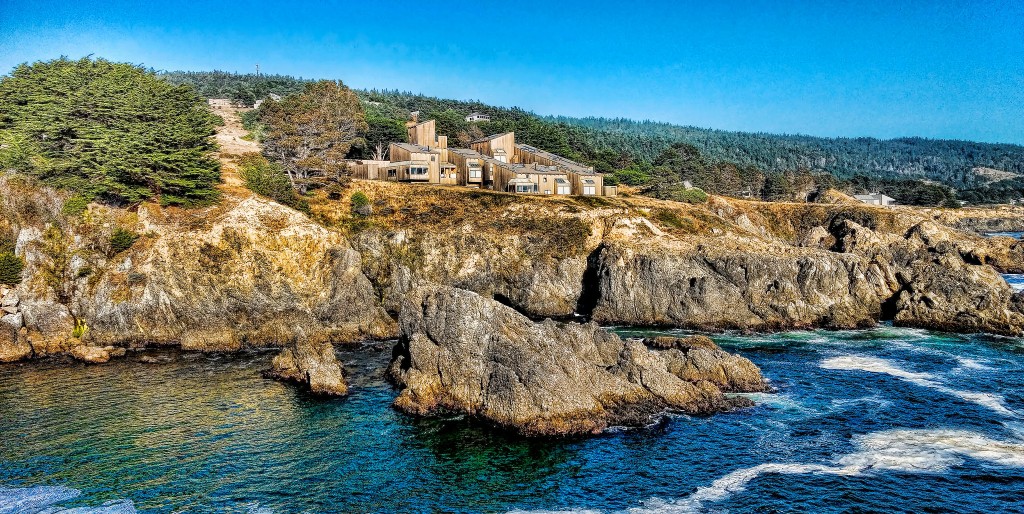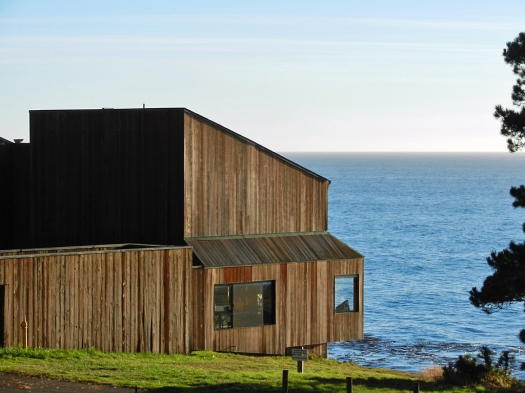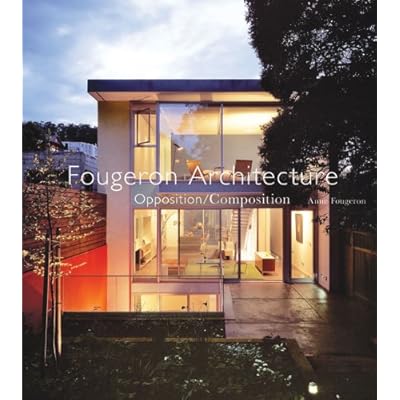Sea Ranch Nostalgia
Last month, I went to the Sea Ranch exhibit at SF MOMA and it was like going back in time for me (metaphorically–the laugh lines remain!). I’ve stayed at the Charles Moore condo –its full size mock up is in the show—a number of times during my years as a Master graduate student of Architecture at UC Berkeley. But I couldn’t tell where my nostalgia was grounded: was it for a longing for my youth or a desire for a revival of modest and lyrical architecture?
For those of you who know me and my architectural tendencies, you might find it surprising for me to rave about the architecture of Sea Ranch. It is not exactly super modern, crafted of steel and glass and exacting in its detailing. If Sea Ranch is anything, it is of that coast, of that topography, of that climate, an unparalleled spot.

Image by Mariano Mantel

Source: SF City Scape
And in that spot sits something simple, uncomplicated, rustic and maybe even a little bite crude. Modern architecture demands that it be the life of the party—but what of the guests that surround it? Sea Ranch. What a breath of fresh air, what an uncontrived set of buildings.

Source SF City Scape
And it’s not just Sea Ranch Condominium 1 that is so striking, it is also the Moonraker Athletic Center and the other condo projects that were never completed.
They still sit, as if waiting for one last planning department meeting. The monochromatic wooden exterior of the Moonraker building is in sharp contrast to the colorful interior with the superb super graphics done by Barbara Stauffacher Solomon. These simple details, as if to say that what matters in a building is the lives lived inside.
And the Chapel? A reminder of a woven basket–or a hat? Somehow perfectly in tune with its environment.


Source SF City Scape
I feel humbled by this architecture. Because while modernism is in my blood, I aspire to do as good to a site as they have done to theirs. It is an enormous gift to be able to build something that is so right, so true and so timeless. Brava!
It is time for our museum to show renewed interest in architecture, the environment and help foster a constructive dialogue about our changing city and its older and newer residents.
Further Reading:
‘Paradise at the end of the world’: An oral history of the Sea Ranch (Part I) (Curbed)

















 I’ve had an iPhone for ten years and I’ve been using Mac computers since the 1990s. Trouble had been brewing in paradise for awhile but it all went down hill with the earphone problem. In an effort to make a slimmer phone, the conical earbud port had to go. But I now need two pairs of ear phones: one for my phone and one for my computer. And there’s no adapter (I swear, look on amazon) to add a headphone jack!
I’ve had an iPhone for ten years and I’ve been using Mac computers since the 1990s. Trouble had been brewing in paradise for awhile but it all went down hill with the earphone problem. In an effort to make a slimmer phone, the conical earbud port had to go. But I now need two pairs of ear phones: one for my phone and one for my computer. And there’s no adapter (I swear, look on amazon) to add a headphone jack! But the final straw? The new Apple HQ designed by Norman Foster. (This was coming: I’m an architect, what did you expect?) Maybe some of you think this is a marvelous piece architecture and don’t get me wrong, I strongly admire Norman Foster’s work but this headquarters is all wrong. It’s wrong on so many levels:
But the final straw? The new Apple HQ designed by Norman Foster. (This was coming: I’m an architect, what did you expect?) Maybe some of you think this is a marvelous piece architecture and don’t get me wrong, I strongly admire Norman Foster’s work but this headquarters is all wrong. It’s wrong on so many levels: 







